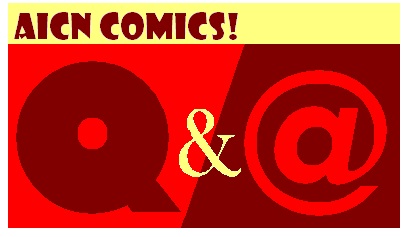
@’s by JUDGE DREDD Artist
Jock!!!
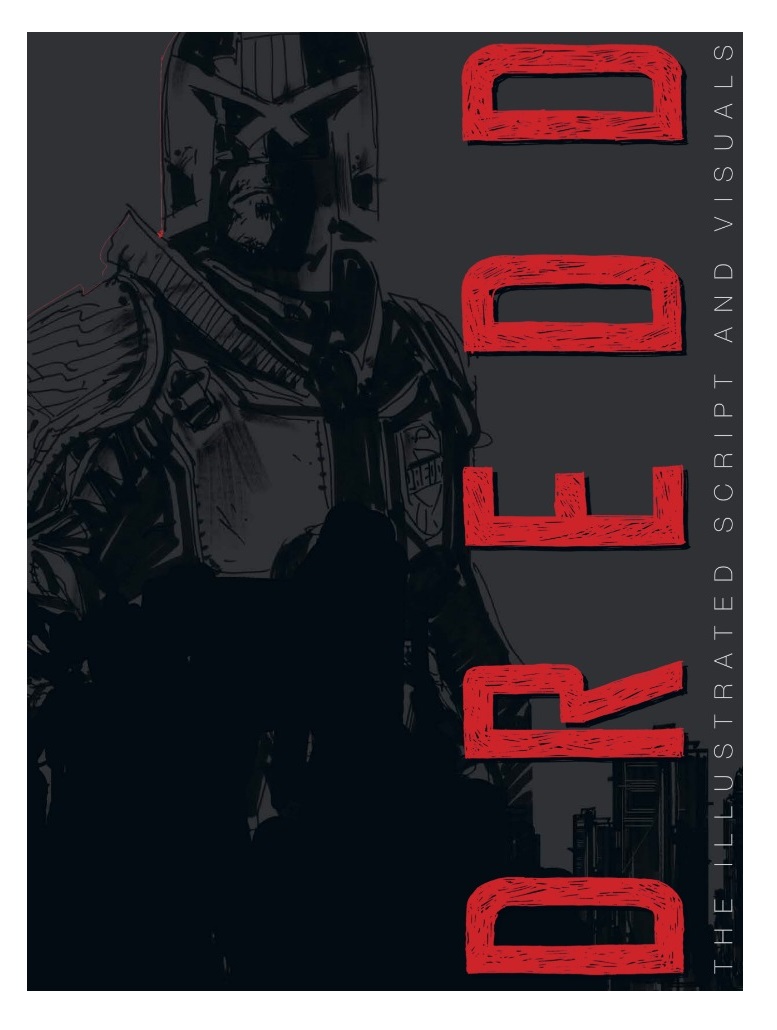 Russ Sheath here. When Dredd, the 2012 adaptation of the classic 2000AD comic book character JUDGE DREDD hit cinemas in 2012, I'll confess I was very excited. With a script by Alex Garland and directed by Pete Travis, DREDD promised to be the interpretation of the classic British comic book character that fans had been waiting for. A far more 'grounded' interpretation of the source material than 1995's JUDGE DREDD, the movie received a positive response from critics and fans achieving something of a cult status that, even 2 years later sees fans hopeful that a sequel will see the light of day. It's impossible to doubt the commitment and enthusiasm of the individuals involved, not least actor Karl Urban who played the titular Judge. When I met him back in 2012 Urban was endlessly enthusiastic about the role, the movie and, unlike many actors who 'claim' to have been a fan of the source material, you could just tell that Urban 'got' Dredd.
Russ Sheath here. When Dredd, the 2012 adaptation of the classic 2000AD comic book character JUDGE DREDD hit cinemas in 2012, I'll confess I was very excited. With a script by Alex Garland and directed by Pete Travis, DREDD promised to be the interpretation of the classic British comic book character that fans had been waiting for. A far more 'grounded' interpretation of the source material than 1995's JUDGE DREDD, the movie received a positive response from critics and fans achieving something of a cult status that, even 2 years later sees fans hopeful that a sequel will see the light of day. It's impossible to doubt the commitment and enthusiasm of the individuals involved, not least actor Karl Urban who played the titular Judge. When I met him back in 2012 Urban was endlessly enthusiastic about the role, the movie and, unlike many actors who 'claim' to have been a fan of the source material, you could just tell that Urban 'got' Dredd.I am an unashamed fan and champion of the movie, from it's inventive use of 3D to take audiences on a 'slo-mo' trip to the visual take on Dredd, an adaptation on the source material that strips away the more fantastical, 'sci-if' elements of the comic book and presents us with a 'near future' reality. Envisioning that reality was the responsibility of long time Dredd comic book artist and production designer Jock, the British artist with credits including co-creator of THE LOSERS as well as work on BATMAN, WOLVERINE and of course JUDGE DREDD. With a foot in the world of movies, you will have also seen Jock's work in the Christopher Nolan DARK KNIGHT TRILOGY and MAN OF STEEL, amongst others. This month sees the release of DREDD: THE ILLUSTRATED SCRIPT & VISUALS by Alex Garland and Jock. A lush showcase brimming with Jock's production design work featured in the movie, DREDD: THE ILLUSTRATED SCRIPT & VISUALS offers an insight into Jock's design process as well as the comic book that Jock produced, from Alex Garland's script, along with the full script itself.
I spoke with Jock about his work on the book and the movie and got an exclusive look at the specially designed print, available exclusively at this years San Diego Comic-Con.
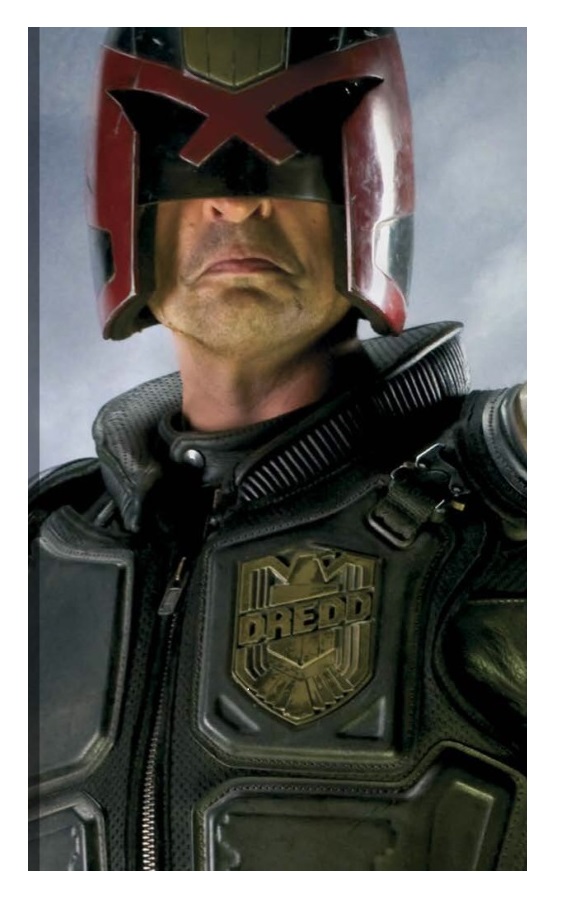 RUSS SHEATH (RS): Jock, let's go all the way back to the beginning - before there was a movie...there was Jock concept art. Can you tell us a little about how you became involved in the movie?
RUSS SHEATH (RS): Jock, let's go all the way back to the beginning - before there was a movie...there was Jock concept art. Can you tell us a little about how you became involved in the movie?JOCK: The film was already in development and the news broke that it had been officially green lit. I had just finished 6 weeks as concept artist on Peter Berg’s adaptation of DUNE when I heard the news - it was literally my last day on that and drew three images of what I thought DREDD should look like, just for my own satisfaction really. I had been fully painting images for DUNE, and just wanted to apply what I hd been doing to an imagined Dredd world. I posted one of them on a blog and it was picked up as ‘official’ art from the movie - I completely panicked but it was too late to do anything about it and it spread across all the major news sites.
What was interesting though was that everyone seemed to want a good Dredd movie. They saw my art as a positive and it went down really well. I got a call from one of the exec producers on DREDD asking if I would come up for a meeting with a view to working on the film... And that’s how it all started.
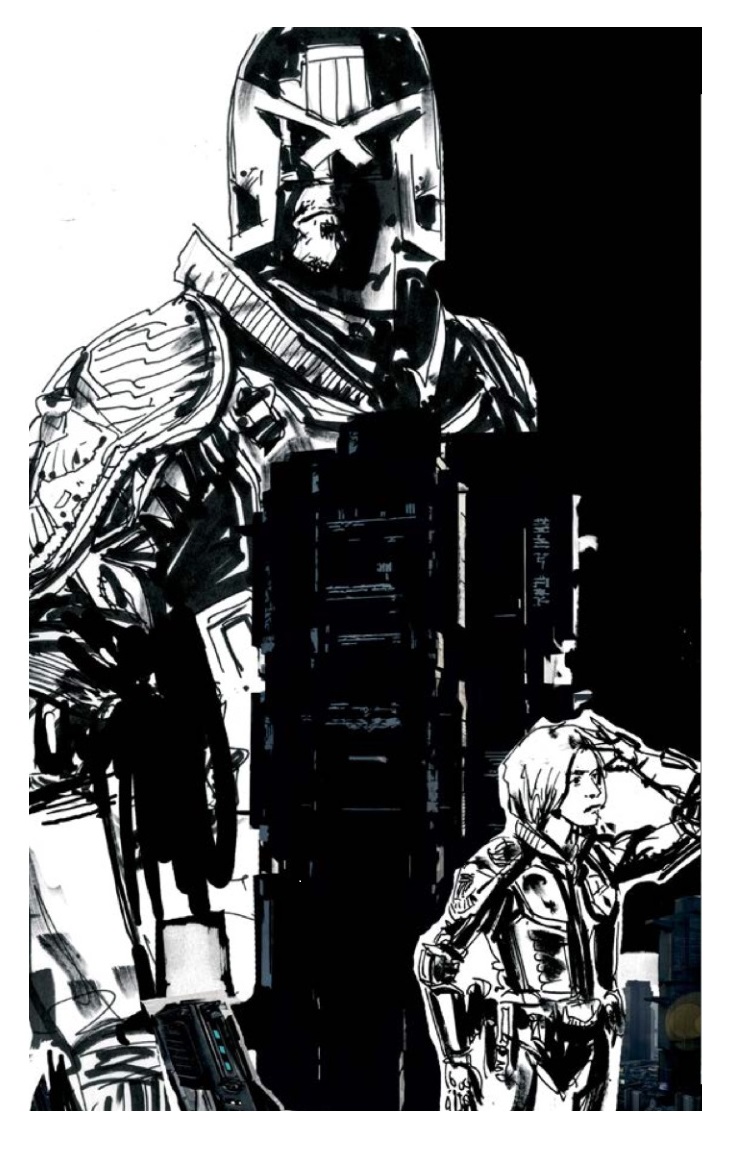 RS: You were no stranger to the character when you came onboard, were there any challenges in reinterpreting a universe that you were so intimately familiar with?
RS: You were no stranger to the character when you came onboard, were there any challenges in reinterpreting a universe that you were so intimately familiar with?JOCK: I grew up reading 2000AD so I guess I had to have some preconceptions, But I was so impressed with Alex Garland and DNA’s vision for the film. Dredd from the comics has a huge range of stories to choose from... it can be satirical, a thriller, comedy, horror etc etc. In order for the character to work as a film you have to pick one definite tone and stick to it. That’s exactly what Alex did - the script was a tight, lean action thriller, and it served as a great introduction to Dredd’s world. My initial ideas differed from that quite bit - The first shot of the city I worked on was much more abundant and opulent. Neon and nightlife everywhere. What we went for in the final look was completely stripped down.
RS: What were your given, or self imposed directives, when starting work on DREDD?
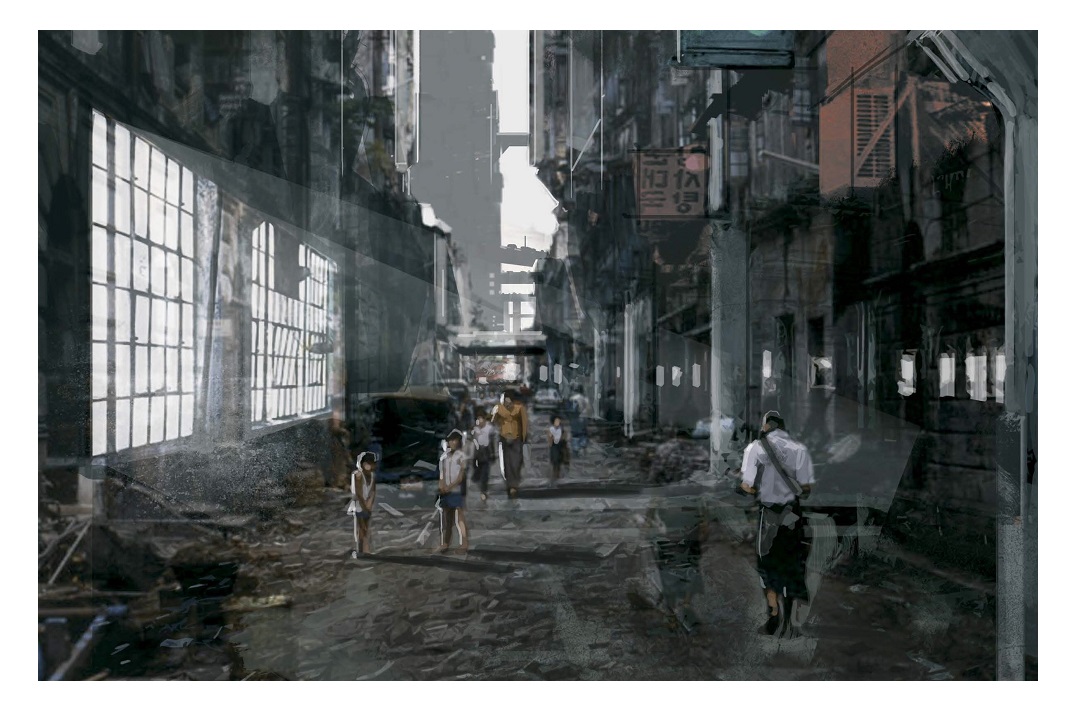 JOCK: The challenge really was to take those parameters from the script and help create a very realistic, believable Mega City 1. Somewhere that as a viewer, you could believe in. So no fanciful sci-fi trappings for the sake of making it ‘futuristic’ - it had to be credible.
JOCK: The challenge really was to take those parameters from the script and help create a very realistic, believable Mega City 1. Somewhere that as a viewer, you could believe in. So no fanciful sci-fi trappings for the sake of making it ‘futuristic’ - it had to be credible.That was really interesting - it was grounded in reality but also still be an exaggeration of today’s society. It actually changed my whole attitude to Dredd in a lot of ways while working on the film, as I had to think about it in a completely fresh way, free from the trappings of the comic.
RS: I get the impression that your work was seen almost as a proof of concept. How much did your art influence the script, and vice-versa?
JOCK: The script was basically complete when I came on board. I think there were a some tweaks after, but it was all there. So my job was to bring that to life as best I could. Alex and the guys at DNA were very complimentary of the work I was doing, so it’s nice to think my drawings had an effect on the final film.
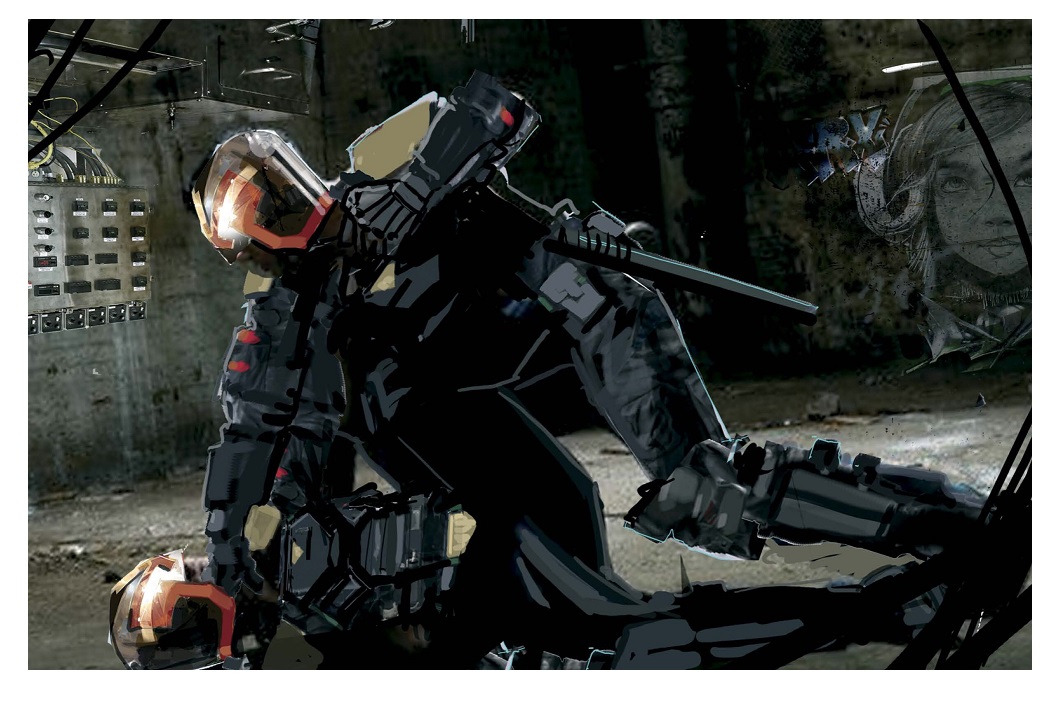 RS: The book is a collection of your production art, but what really intrigues me is that you basically produced the script as a full page comic book - tell us about your thoughts behind that process?
RS: The book is a collection of your production art, but what really intrigues me is that you basically produced the script as a full page comic book - tell us about your thoughts behind that process?JOCK: Yeah, that was my first job - a comic version of the script. they wanted something to give to financiers, actors and others involved in the production that would get the script across in a very visual way. I found that really interesting - I think a lot of people read scripts and can’t necessarily ‘see’ the film. And with a property like Dredd I think it helps to sell those visuals and moments, so DNA had the idea for the comic. they needed it pretty quickly though, so we settled on a fairly loose, functional style somewhere between storyboards and finished comic art.
And while working in this way I also painted up key frames and moments in full color to give a broader depth and sense of the world. the book has everything - the complete script and comic, but also the painted concept work and costume design, along with many unseen pictures from production.
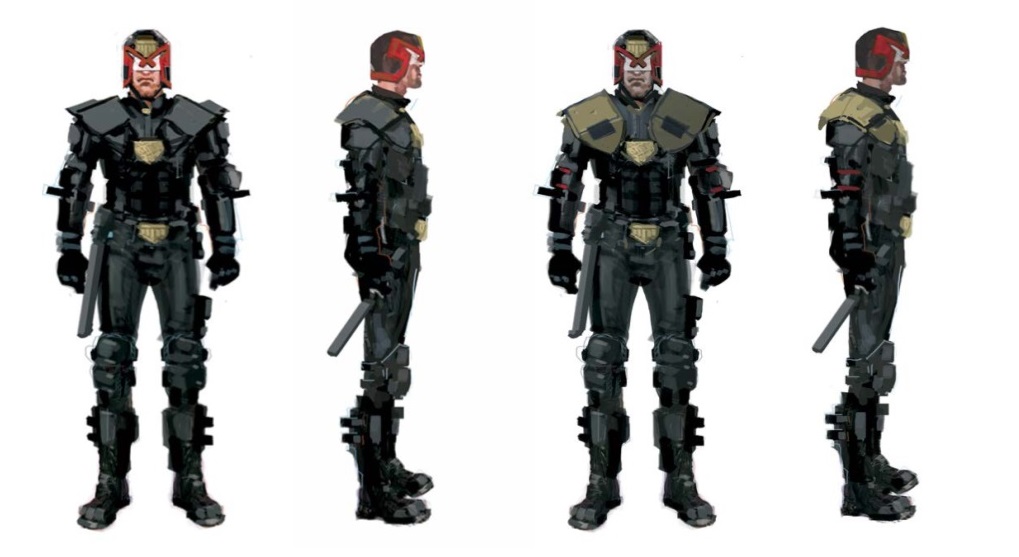 RS: There are many 'iconic' designs and elements to the established world of Dredd from the comics, were there any aspects that were sacred or was everything 'open to fresh interpretation’?
RS: There are many 'iconic' designs and elements to the established world of Dredd from the comics, were there any aspects that were sacred or was everything 'open to fresh interpretation’?JOCK: The helmet was sacred. Everyone agreed that is the iconic look of Dredd and shouldn’t be tampered with. Everything else had to be functional - so no over the top shoulder pads and chains. More akin to a riot cop.
RS: What were the most challenging aspects that you had to deliver from Alex Garland's script?
JOCK: Again, it was really interesting trying to create the look of an iconic character and world, but keep it within those believable parameters. It was a challenge but I’m really proud of what the film achieves. Good science fiction has to have it’s own internal logic to create a believable world, and I feel like DREDD has that. Even though some of the look and tone changed from the comic, the spirit is there and it’s been amazing to see the response to the film as time goes by. People seem to genuinely love it.
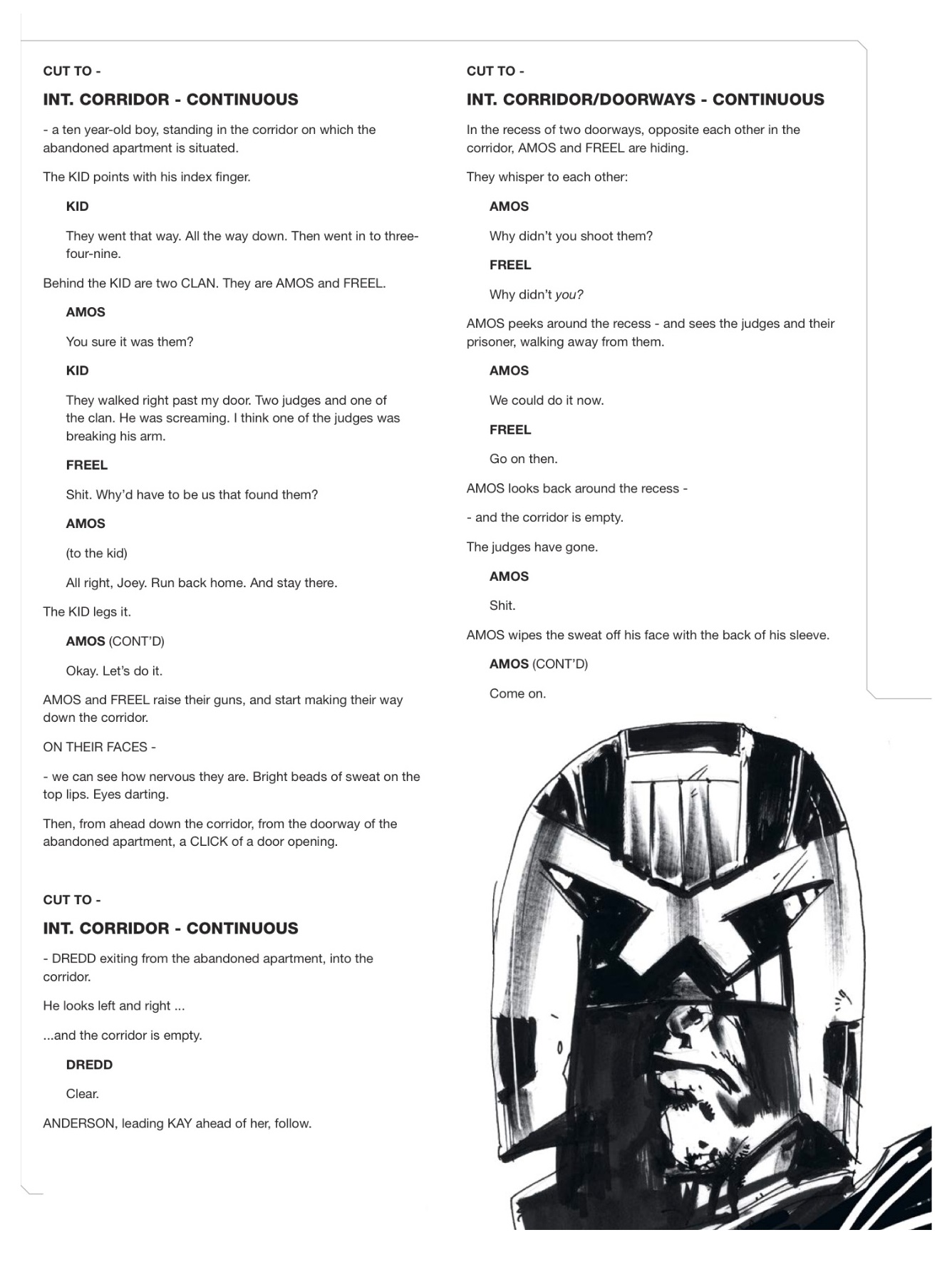 RS: Did you draw upon any specific influences, outside of the established world of a Dredd from the comics?
RS: Did you draw upon any specific influences, outside of the established world of a Dredd from the comics?JOCK: A couple of crime films were mooted as influences early on in pre production… I remember GOMORRAH for example, an Italian crime drama that all takes place in one building. I tried to think of it as a real world film that just happens to take place in the future rather than a science fiction feature. Again, on a personal level I just pushed myself to maintain a down to earth approach to the larger than life material.
RS: Naturally, the Sylvester Stallone movie Judge Dredd drew a lot of criticism from fans at the time. From a design perspective, were there any aspects of that movie that you felt 'did' work?
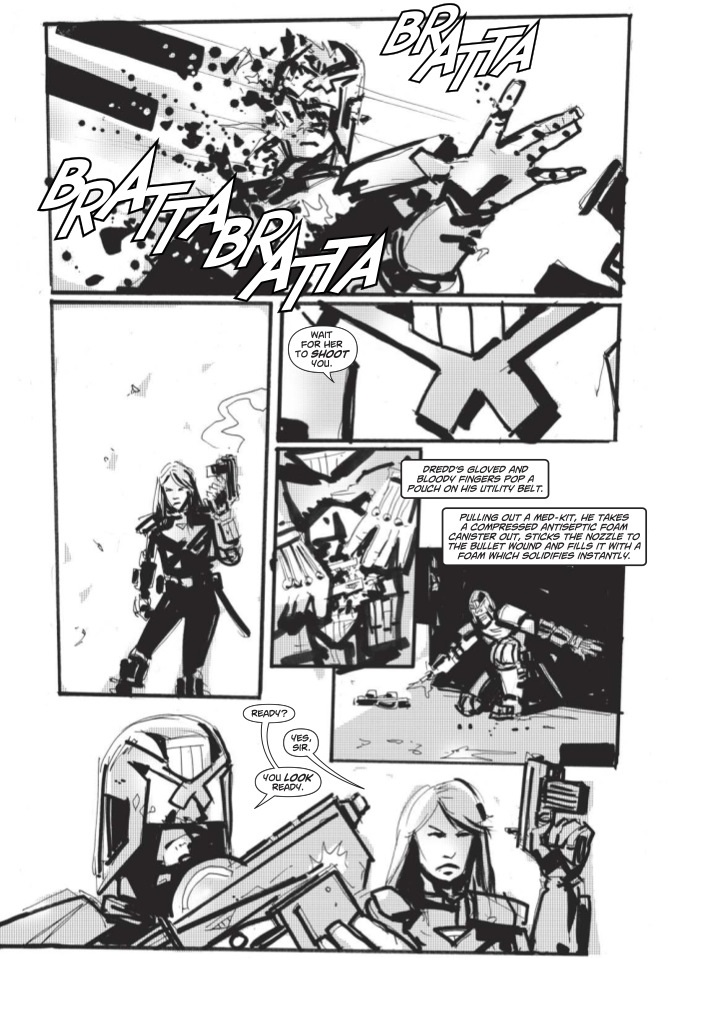 JOCK: That’s good question. a lot of people really like the production design on that, and the look of Mega City 1. But for me there were way too many flying cars… it didn’t seem to have a believable system in place. To me, Mega City should be all about roads. Miles and miles of freeway with huge vehicles endlessly traipsing around the city. Also their costume was very over the top and fanciful, which wasn’t what we were going for with DREDD.
JOCK: That’s good question. a lot of people really like the production design on that, and the look of Mega City 1. But for me there were way too many flying cars… it didn’t seem to have a believable system in place. To me, Mega City should be all about roads. Miles and miles of freeway with huge vehicles endlessly traipsing around the city. Also their costume was very over the top and fanciful, which wasn’t what we were going for with DREDD.But saying that, we barely even mentioned the Stallone version during production. This was an entirely different take and personally I didn’t really want to look at that version. I didn’t watch it again either.
RS: For you, as a long standing Dredd artist and presumably a fan too. What were the most important aspects of Dredd to 'get right?’
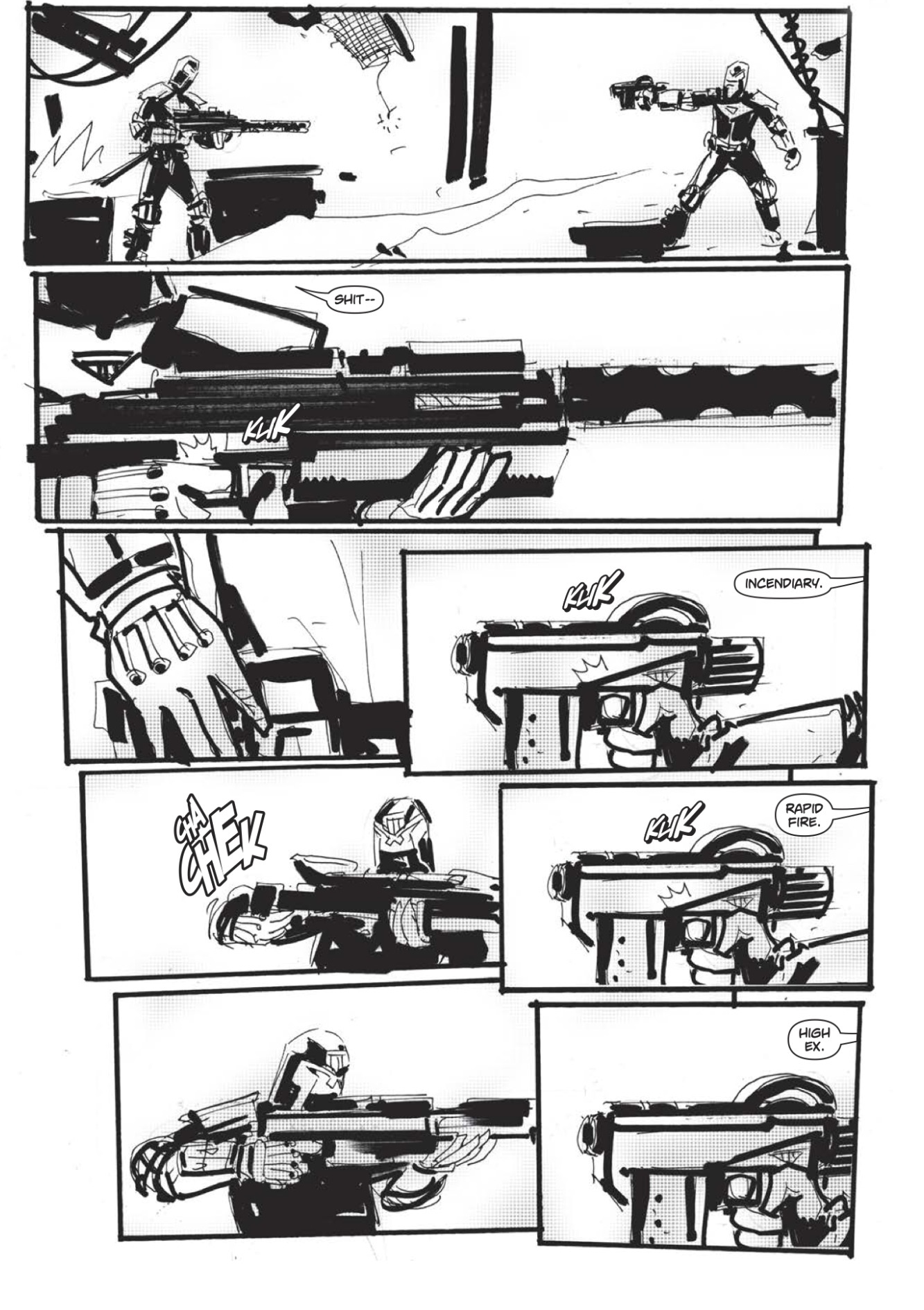 JOCK: Just the tone of the character. He’s a constant. People can easily read him as a fascist but he’d also take a bullet for you. That’s why I think it was smart to make this movie more about Anderson… there’s a nice moment near the end when Dredd is cleaning Anderson’s wounds and she realizes that she can rely on him. I really pushed for that in the early meetings we had. He’s a character that’s easy to misread, and I think it’s important to show him actually as a very strong personality, even if what he stands for is questionable.
JOCK: Just the tone of the character. He’s a constant. People can easily read him as a fascist but he’d also take a bullet for you. That’s why I think it was smart to make this movie more about Anderson… there’s a nice moment near the end when Dredd is cleaning Anderson’s wounds and she realizes that she can rely on him. I really pushed for that in the early meetings we had. He’s a character that’s easy to misread, and I think it’s important to show him actually as a very strong personality, even if what he stands for is questionable.RS: I met Karl Urban during press for the movie and it was clear that he 'got' Dredd. Did Karl offer any input into the design process?
JOCK: Karl was cast after I had finished on the film, but i’ve spent time with him since then and yes, it’s very clear he get’s it. It’s great to see. We did a panel before another screening at ECCC recently and the room was just packed. It’s very heartening to see that. And Karl has real knowledge of the character and what makes him tick.
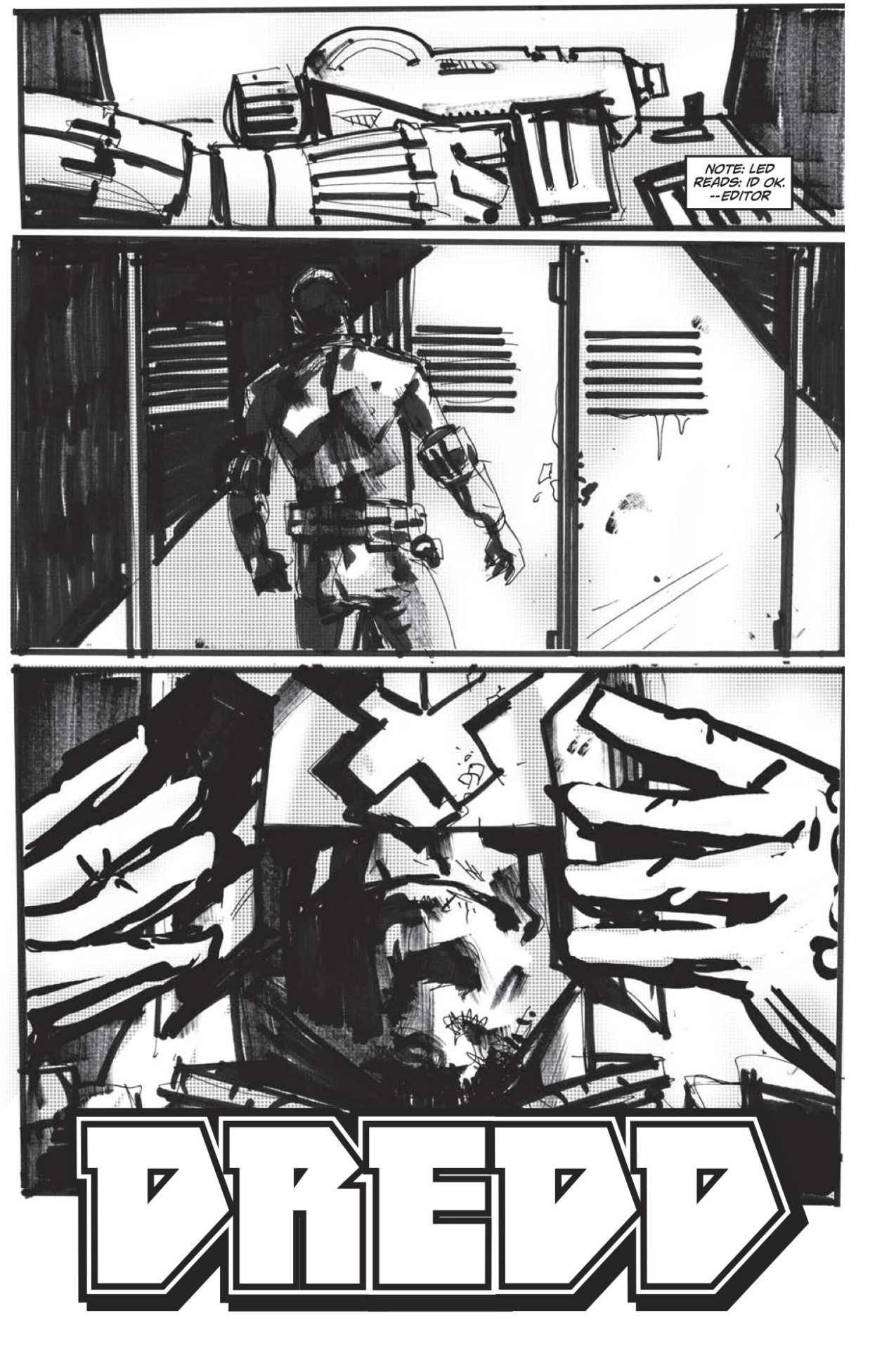 RS: Are you an artist who can revisit his own work with an objective eye?
RS: Are you an artist who can revisit his own work with an objective eye?JOCK: It was actually great putting it all together again.. I worked really closely with Simon Parr, the designer at 2000AD and we went over a lot of stuff together. Lots of drafts, playing around with what worked best. I hope we’ve struck a nice balance between plenty of content but also a great looking book.
RS: What were your favorite aspects of putting the book together?
JOCK: I’m just proud to put it out there. It’s a pretty unique insight into the early stage of the film’s production, so hopefully people will respond to that. It comes out just in time for SDCC this year. I’ll be attending too and we’ll have copies of the book at 2000AD’s Booth (2806). We’ll also have a limited DREDD litho print, only available at the show.
 RS: What aspects of Dredd, are you most fond of when you revisit that work?
RS: What aspects of Dredd, are you most fond of when you revisit that work?JOCK: Probably that we brought a new look to Dredd, but that it was embraced... I’m first and foremost a Dredd fan, so it meant a lot to me that we got that right. I hope we succeeded.
RS: DREDD: THE ILLUSTRATED SCRIPT & VISUALS by Alex Garland and Jock is out this month. Be sure to check out the 2000AD booth (2806) at SDCC and the convention exclusive print.
For prints, artists proofs and more, check out Jock's online store here and his website here.
You can follow Jock on Twitter @jock4twenty
And pre-order DREDD: THE ILLUSTRATED SCRIPT & VISUALS here!
Follow Russ Sheath's blog Russwords here and @russellsheath on Twitter.
Proofs, co-edits & common sense provided by Sleazy G
